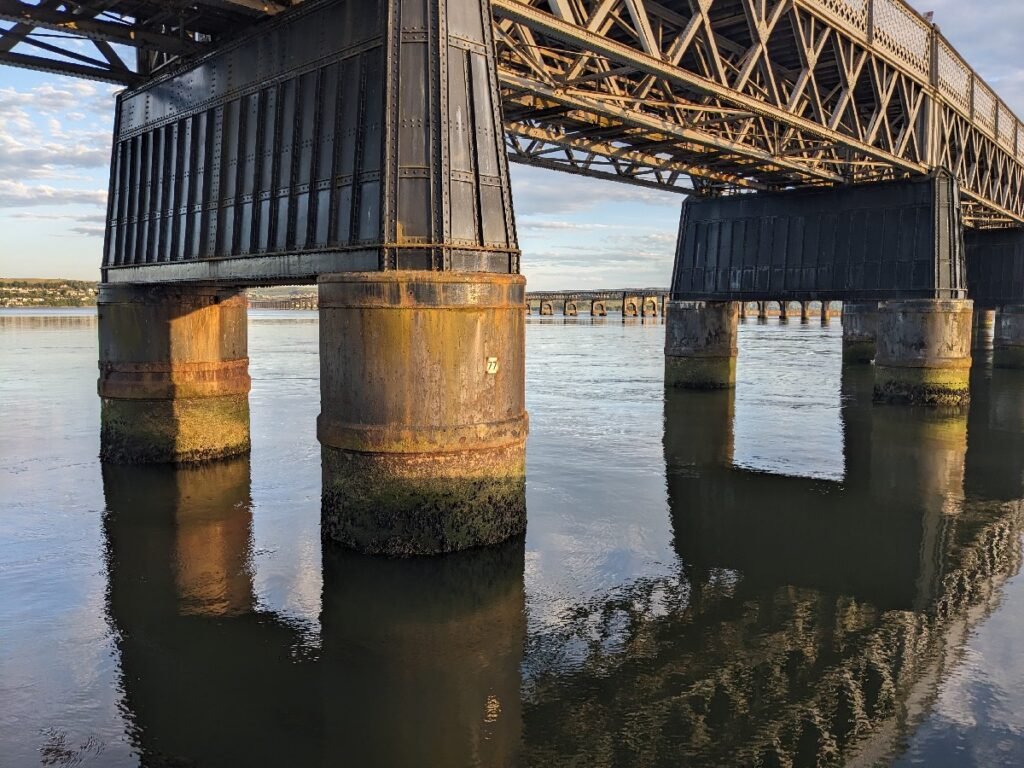28th December 1879
The Tay Bridge disaster
The Tay Bridge disaster has earned itself an unfortunate place in history as one of the worst ever incidents on the British railway network.
The precise number of dead is unknown, although 75 are estimated to have lost their lives when the first Tay rail bridge collapsed as a Burntisland to Dundee train was passing over it. The bridge had been open for just less than two years, but was brought down by high winds, which fatally compromised the girders.

“Appalling” railway disaster
The following day’s Dundee Advertiser, which described the collapse as “the most appalling railway disaster that ever occurred in the world”, reported that “a visit to the scene of the disaster at an early hour this morning showed that an occurrence of terrible magnitude had taken place. Of the elegant structure, which but a few hours before stood apparently intact in its strength, about a third had been swept away, and the only sections remaining were the north and south portions which connected the Bridge to the north and south shores of the Firth of Tay.”
The day after the disaster, the Liverpool Echo gave a full account, and quoted the Daily Telegraph, which told readers that “all the thirteen great girders [of the bridge] were involved in the ruin. The surmise is that as the train was in the act of crossing a terrific gust swept the valley, and that the resistance offered by the train had helped to intensify its destructive force, which proved sufficient to hurl girders and train into the river… there is sufficient evidence that about 3,000 feet have given way, and that the gigantic piers alone are left standing.” The paper also pointed out that “in some quarters it is said there had been a suspicion against the stability of the structure.”

Bridge swept away
“Fully two fifths of the great bridge, the greatest modern ‘triumph of engineering,’ and the pride of the country, has been utterly swept away,” reported the Edinburgh Evening News of 29 December. “There are only two theories of the disaster. Either the extra strain caused by the passage of the train proved too much for the already strained girders, or these had given way before its arrival, and it plunged straight into the Firth.”
The Board of Trade launched an inquiry into the collapse and reported back the following summer. The Shields Daily Gazette of 5 July 1880 noted that “the reports of the Commissioners appointed to inquire into the causes of the Tay Bridge disaster are much more startling than such reports usually are… when the structure fell it was considered that the excessive strength of the wind was sufficient to account for its failure, without assuming that there had been any defects in the construction or maintenance, or any recklessness in the running of the trains. The reports in question dissipate this comfortable notion and express opinions which, to laymen at least, class the Tay Bridge as one of the most disgraceful as well as most fatal engineering episodes of modern times.”
Rushed construction
It was judged that a desire to construct the bridge as quickly as possible, “without seeing whether it was properly executed or not” had been a contributory factor. As reported by the Shields Daily Gazette, the iron piers were not substantial enough, the cross bracing was too weak, the workmanship was poor, and the train had not been limited to travelling at 25 miles an hour, as it should have been.
On 10 July 1880, the Banffshire Reporter said that the report was “very unfavourable, as it condemns the engineer, the contractors, the company, and in fact all connected with the construction and supervision of the bridge.” It further noted that “it will be some reassurance to the public to learn that the [Parliamentary] Bill for the reconstruction of the Tay Bridge [by the original designer, Bouch] is not to be allowed to pass without challenge…”
Sir Thomas Bouch, died of anxiety shortly after the conclusion of the inquiry.
Other events that occured in December
FREE Scotland history newsletter
Don't miss our weekly update on Scotland's fascinating history. We promise never to sell your data to anyone else, and there's a super-easy unsubscribe link on the bottom of each email so you can leave whenever you want.
